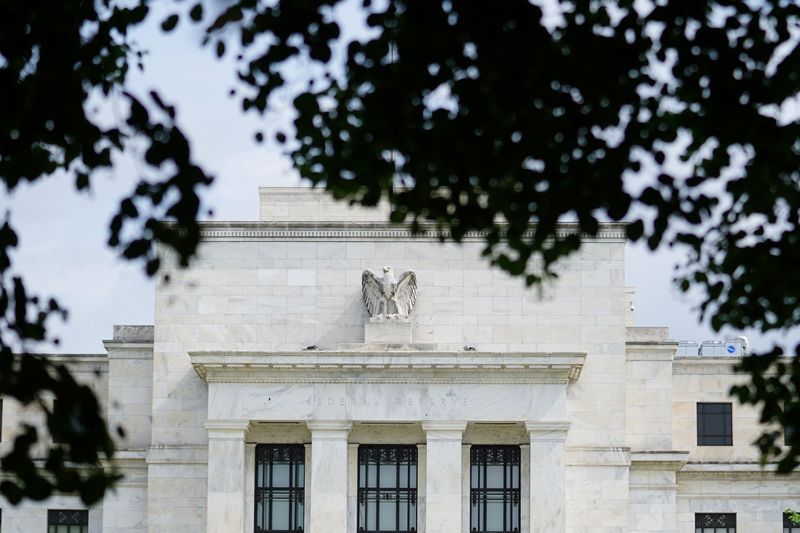By Michael S. Derby and Lindsay (NYSE:) Dunsmuir
(Reuters) -Federal Reserve officials, encouraged by recent data, are looking for confirmation that inflation is sustainably cooling and for any warning signs from a still-strong labor market as they steer cautiously toward what most expect to be an interest-rate cut or two by year’s end.
Outlining a litany of reasons for optimism that inflation is back on track to the Fed’s 2% goal after stalling earlier this year, Fed Governor Adriana Kugler said Tuesday she believes monetary policy is “sufficiently restrictive” to ease price pressures without causing a significant deterioration in the job market.
“If the economy evolves as I am expecting, it will likely become appropriate to begin easing policy sometime later this year,” she said in remarks prepared for delivery Tuesday to the Peterson Institute for International Economics in Washington.
While more progress is required, she said, “I believe economic conditions are moving in the right direction.”
The U.S. central bank last week kept its benchmark interest rate in the 5.25%-5.50% range and released updated economic projections that showed its officials had pared back their expectations for rate cuts this year, to one from the three seen in March, after stronger-than-expected inflation data in the first months of 2024.
Most analysts equate fewer rate cuts with a later start to them, particularly after Fed Chair Jerome Powell said the first reduction in borrowing costs will be “consequential” because it could reset market expectations.
Other Fed officials speaking on Tuesday were more reticent than Kugler about their policy path outlook.
“I expect interest rates to come down gradually over the next couple of years, reflecting the fact that inflation is coming back to our 2% target and the economy is moving in a very strong sustainable path,” New York Fed President John Williams said on Tuesday in an interview on the Fox Business television channel.
He, like most Fed officials of late, declined to give any clear steer about when that could occur. Financial markets are currently pricing in a first rate cut in September, with a second one seen likely in December.
“I’m not going to make a prediction” about the exact path of policy. What happens “depends on how the data evolves,” he said. “I think that things are moving in the right direction” for an eventual easing.
Boston Fed President Susan Collins, in a separate event, cautioned against over-reacting to “promising” economic news.
“It is too soon to determine whether inflation is durably on a path back to the 2% target,” Collins told a group in Lawrence, Massachusetts. “The appropriate approach to monetary policy continues to require patience, providing time for a methodical and holistic assessment of the evolving constellation of available data.”
To Richmond Fed President Thomas Barkin, the key will be for price pressures to ease persistently in services as well as in goods.
“We are clearly on the back side of inflation,” Barkin told MNI in a webcast interview, adding that he found recent data showing consumer prices did not rise at all from April to May “encouraging.” Still, he said, the choppiness in data since last year means the policy path ahead is not clear.
“We will learn a lot more over the next several months and I think we are well positioned from a policy standpoint to react,” he said.
MIXED DATA
Economic crosscurrents that could push the Fed either to wait longer or move earlier were on display on Tuesday, with the U.S. Commerce Department reporting a smaller-than-expected increase in retail sales in May and the central bank reporting a jump in manufacturing output.
For the Fed, “job number one is to make sure that we get inflation back to 2%,” Williams said on Tuesday, as he rejected the idea that the central bank would tolerate inflation holding around the 3% level.
He also weighed into the debate that some recent data might be overstating what have been robust job market gains. Overall, the data “tell me convincingly we still have a very strong labor market and we’re seeing some slowing in hiring,” Williams said. But he acknowledged some parts of the job data may be “overstated,” adding that it will take time to confirm it.
>>> Read full article>>>
Copyright for syndicated content belongs to the linked Source : Investing.com – https://www.investing.com/news/economy-news/feds-williams-expects-rates-to-come-down-as-inflation-pressures-ease-3488405
